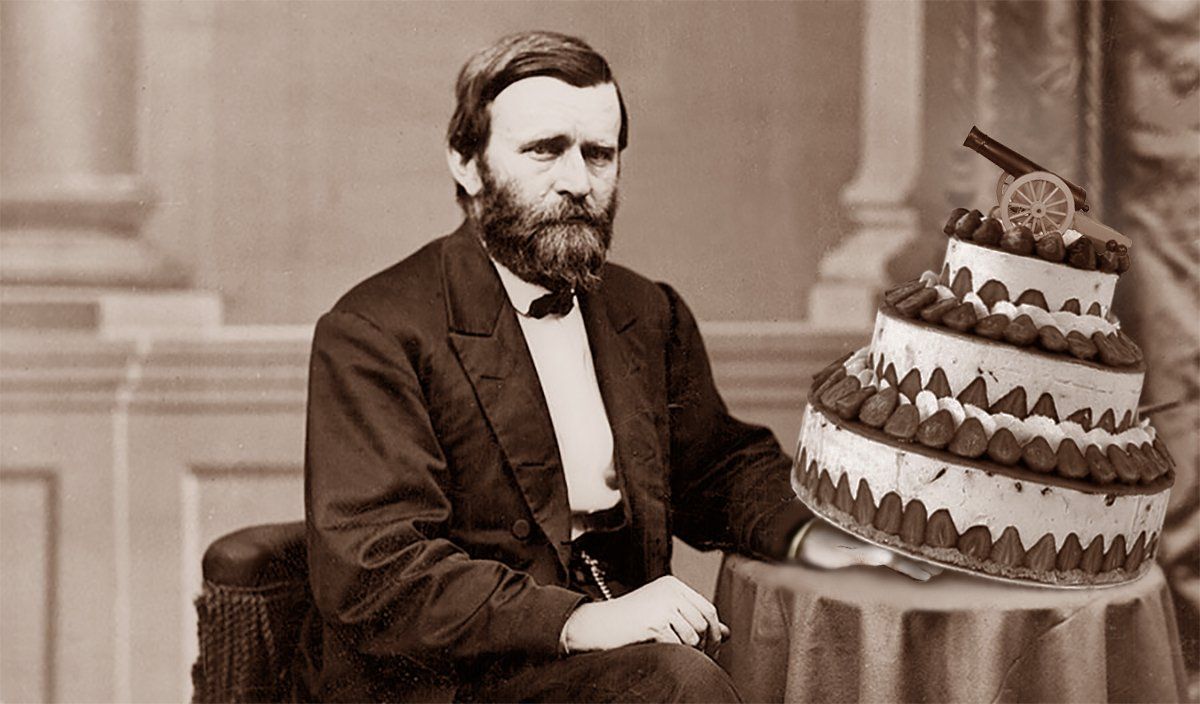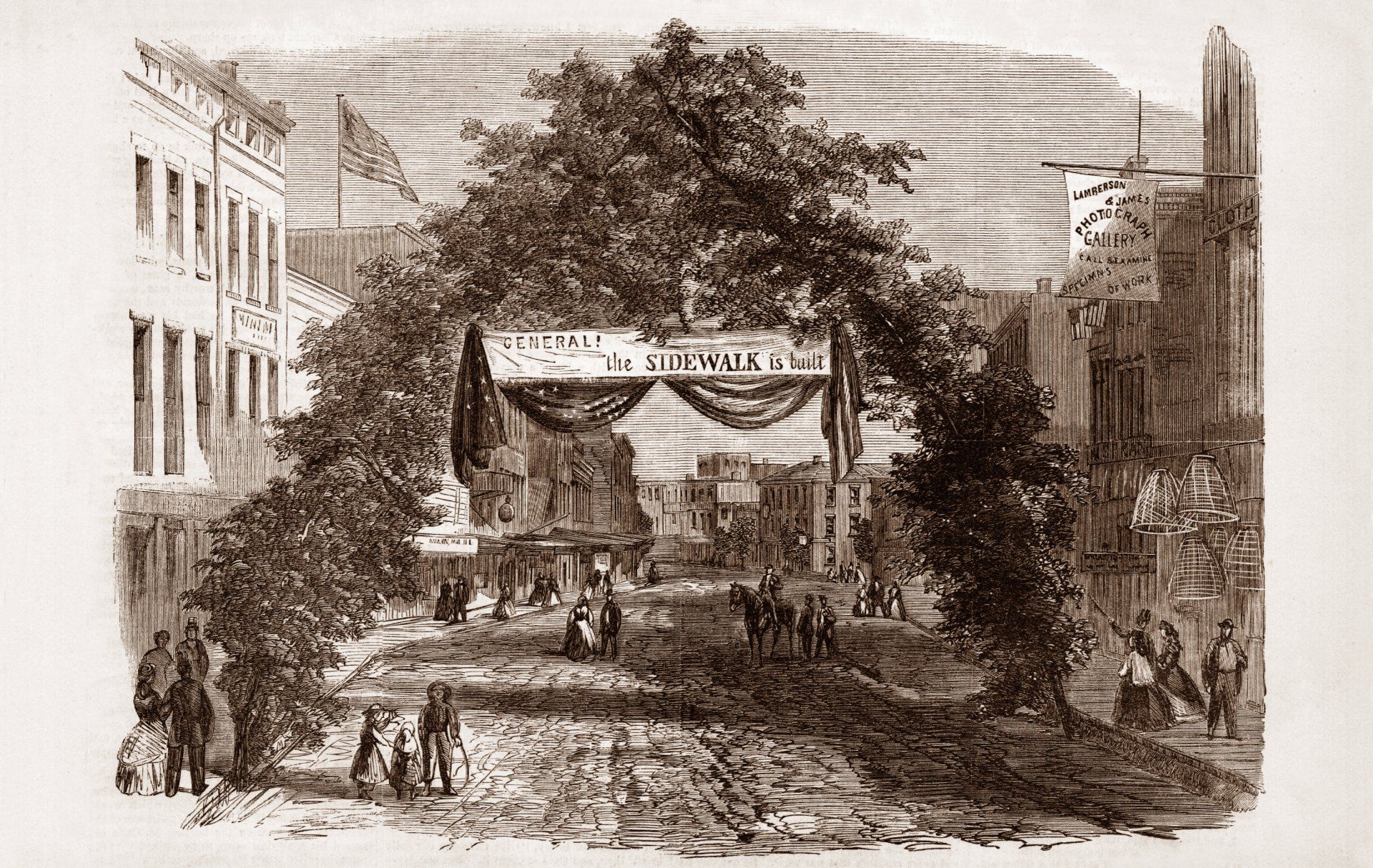
Abolitionist and known for his outspokenness, Jesse often bragged about his son, introducing him as “my Ulysses”. The coming into the world of this first-born was long overdue and tradition dictated that the choice of first name was a matter of relentless arbitration. The paternal and maternal families strived to place their own choices. Many weeks after the birth, the parents had still not found a consensus. Potential names were written on slips of paper and placed in a hat. The mother expressed reservations about this process, considering it uncivilized. However, the prospect of breastfeeding an anonymous baby one more day overcame her skepticism. The name Ulysse was drawn by an innocent hand, after been drawn from a family book, a novel by the French poet François Fénélon, The Adventures of Télémaque. France had just sold Louisiana 18 years earlier but its honor was safe, a French poet baptized the future American President using the name of his hero. Also fearing a maternal fury, Jesse declared that his son’s name would be Hiram Ulysses Grant.
At an early age Ulysse was convinced to work in his father’s tannery, but it wasn’t long before he expressed a strong aversion to the practice. When he was 17, a family friend and prominent attorney from Ohio had him unknowingly assigned to West Point Military Academy as Ulysses S. Grant, written by mistake or presumably guessing fate history for the teenager. Indeed his future classmates were quick to deck him out with the nickname Sam or sometimes United States, which the name U.S. Grant did not fail to inspire.
In 1843, Sam earned a diploma and in meantime a reputation as an excellent rider from West Point by setting a show jumping record which was not broken until 25 years later, if one does not take into account the numerous ones sown throughout his military and political career. The young soldier and his mount were assigned near Saint-Louis, Missouri from where they escaped regularly, during leave, to find the sister of a former comrade of the Academy. After 4 years of secret engagement, on August 22, 1848, Ulysse married in his parents’ house in Saint-Louis Julia Dent who gave birth to 4 children. But Jesse, a staunch and outspoken abolitionist, didn’t attend their wedding, not because he didn’t like Julia, but because her father, Fredrick Dent, owned slaves.
Military pay soon proved insufficient to support his family. So Ulysses went into business to be cheated by a sulphurous partner. In return, he earned a new nickname from his father, whom respect for the future statesman obliges us to keep quiet. Affected by his financial setbacks, he was also affected on the West Coast by the Army, where soon, encountering difficulties with his commander, a rumor circulated relating to an allegedly fierce consumption of alcohol. He then had the choice between resigning from the Army or facing a court-martial. His father tried to get him to avoid both, but his tearful letters to the War Department had no effect.
Subsequently, Jesse Grant opened a leather goods store in Galena, Illinois, hoping to see his 3 sons settle there and afford a well-deserved retirement. The shop, housed on Main Street in a brick building, whose window was lined with saddles and fancy boots, sold harnesses and other leather goods. The author of these lines, himself, lived there in the street above, North Bench Street, and was wedded in 1992, in the Grant Park gazebo, in the shadow of the benevolent statue of Ulysses and a Civil War cannon.

Sixty-year-old Jesse Grant retired from the business and passed the reins to his 3 sons, Samuel, Orvil and soon Ulysses. After resigning from the army and failing in farming and several business ventures, Ulysses turned to his father and accepted a position as a clerk at the Galena’s store. With the Civil War approaching, the place became a hotbed for discord between, on the one hand, Jesse and his sons Samuel and Orvil, all fervent Republicans, and on the other their self-confessed Democratic leanings Ulysses. The war would soon level the differences and from the first scuffles he quickly re-enlisted in the army, responding to President Lincoln's call for 75,000 volunteers. While making a strong impression on the recruits, he was promoted to Colonel with the support of Representative from Illinois, his friend from Galena Elihu B. Washburne, on June 14, 1861 and assigned to the State 21st Volunteer Infantry Regiment. Taking command of major battles, he was promoted Commanding General of the United States Army by President Lincoln, with authority over all Union armies. His decisive victories contributed to Lincoln’s victory for his second term in 1865.
On April 14 of that year, 5 days after the surrender of the Northern Virginia Army marking the end of the Civil War, Lincoln was mortally wounded by a Confederate sympathizer, John W. Booth, and died the following morning. The assassination was part of a plot to eliminate some northern leaders. Grant had attended a Cabinet meeting on April 14, and Lincoln had invited him and his wife to accompany him to the Ford Theater; the couple declined the proposal as they intended to travel to Philadelphia. This probably saved his life as Booth planned to stab the General after he shot the President with his pistol. At the April 19 funeral, Grant did not hide his tears as he said “He was unquestionably the greatest man I have ever met.”
In 1865, Galena welcomed the Lieutenant General into his home with a pride matched only by that of his father. When a suggestion was made to him about the White House, he remarked that he did not aspire to be President, but that he preferred to become Mayor of Galena, and to see the construction of sidewalks there, whose absence had saddened him somewhat. Today, Galena can also be proud of its sidewalks, which the Galena Gazette did not fail to illustrate. The news must not have escaped Ulysses before his arrival, he who was not to read any other daily paper. A special train carrying General Grant left Chicago at 8:30 a.m. with, as a travel ticket, his portrait hanging on the locomotive. The crowd greeted the passage of the train and the station of Marengo had erected a flowery triumphal arch across the track. Should we see this as a nod to history? Another triomphal arch, this one in stone, was to be erected in Paris after the Battle of Marengo in Italy, by a General proud to see his own victories engraved on it.

Galena was not reached until mid-afternoon. The strategist must have thought that at this rate he would have lost the war, when cheers and gunshots brought him out of his torpor. At De Soto House, a large, tastefully carved and decorated plant arch spanned Main Street. On either side of the arch hung signs reading “Welcome to Our Citizen” and the names of the victor's many battles. Further on, another arch bore the inscription “General, the sidewalk is built”. The streets were crowded with citizens and visitors, among whom his soldiers saluted him. His friend from Galena Washburne welcomed him, then the city band sounded the brass and the drums before leaving Ulysses and his wife to reach his new home by the sidewalks he had planned to build. A beautiful residence, a gift from the Galenians, was waiting for them as well as a jewelry set created by a New York jeweler and intended for Julia. A welcome basket that would anticipate a sulphurous rumor of corruption at all levels of government, only nuanced by that equally sticky of a large consumption of scotch.
Grant was one of the most popular men in the country before the presidential election of 1868. He was chosen unopposed in the first round by the Republican convention, while remaining in Galena, leaving the speeches to his supporters as was the standard at the time. When he became president, Grant had never held elected office and was, at 46, the youngest President in history. In his speech, Grant defended the passage of the 15th Amendment to the Constitution guaranteeing the civil rights of African Americans. He appointed his friend Elihu B. Washburne to the State Department. Washburne, however, resigned after 12 days for health reasons; some have nevertheless argued that this was a maneuver to give more weight to his appointment as ambassador to France. He was, during the Franco-Prussian War, Ambassador from 1869 to 1877, remaining in Paris during the siege and the Commune which followed, to open a field hospital near his embassy. Washburne was a heroic protagonist and an impartial witness to the abuses perpetrated on both sides of the insurrection.
Grant’s second term was marked by a deep slump, a time when the economy was open to speculation and westward expansion generated widespread corruption in the administration. But Ulysses could boast of having eliminated slavery, the cause of secession, and of having brought the South back into the Union. A Union of unmatched solidity, neither before his presidency nor after...
Having left the White House, Grant and his family embarked on a 2-year world tour. The couple faced a royal dinner at Windsor Castle with a Queen Victoria speaking an almost foreign language. They then traveled to Belgium, Germany and Switzerland before returning to the u.k. where they spent a few months with their daughter Nellie who had married a Briton. Grant and his wife visited France and Italy and spent Christmas 1877 aboard the sloop u.s.s. Vandalia moored in the port of Palermo. After a winter stay in the Holy Land, they visited Greece before returning to Italy for a meeting with Pope Leo xiii. Following a trip to Spain, they traveled again to Germany; Grant met with German Chancellor Otto von Bismarck and the two men toasted and discussed the art of war and toasted again. After another visit to England and Ireland, the couple left Europe and crossed the Suez Canal to British India. They traveled to Burma, Siam, Singapore and Vietnam. In Hong Kong, Grant began to change his mind about colonialism, believing that British rule was not “purely selfish” but also beneficial to local subjects. The couple then passed through China. Ulysses declined a meeting with Emperor Guangxu—then only 7 years old—anticipating a sad snack, but traded with the regent and his wine cellar. In Japan, Grant met Emperor Meiji but the couple felt homesick, realizing they had spent most of their savings.

To make his financial situation more precarious, Ulysses did not fail to join forces with his son, Ulysses Jr. who had created a business bank, using the same talents inherited from his father. Completely ruined—the $50 bills did not yet bear his effigy—the disgruntled Congress granted him the rank of General of the Army again with full retirement in March 1885. To restore his finances, he wrote several articles that delighted the critics to the point that his friend Mark Twain made him accept a proposal from his publishing house Webster & Co. to write his memoirs. The 2 volumes of the book, entitled Personal Memoirs of Ulysses S. Grant, completed shortly before his death on July 23, 1885, were a great success. But the publisher went bankrupt a few years after signing Ulysses. Twain, with little resentment, called his friend’s memoirs a “literary masterpiece” and compared them to Julius Caesar’s Commentaries on the Gallic Wars.

















